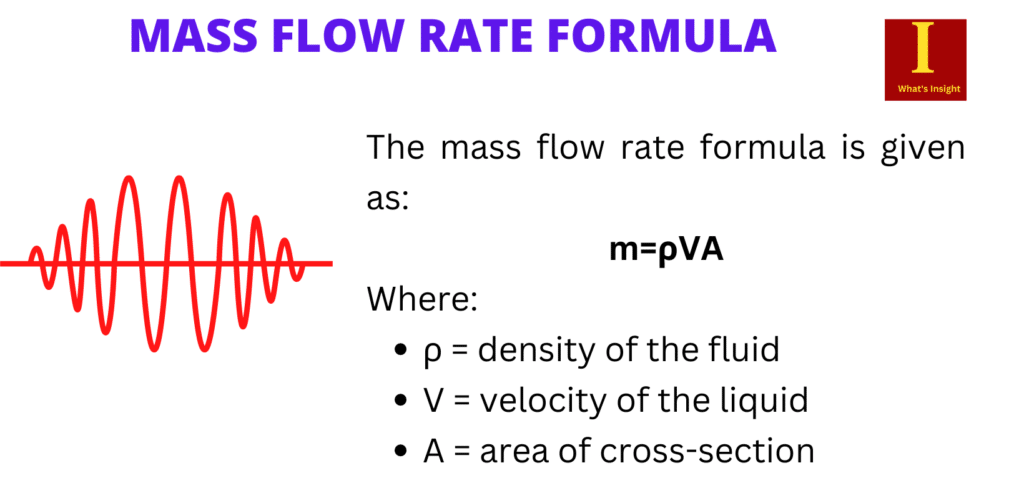The mass flow rate is the amount of liquid that passes per unit of time. In simple words, the mass flow rate is the rate at which liquid passes through a unit area. The mass flow rate formula given below shows that the flow of mass is directly proportional to the density, velocity of the liquid, and cross-sectional area. Throughout the industry, mass flow rate measurement is the foundation of most recipe formulations, material balance determinations, billing, and custody transfer operations.
Some examples of mass flow rates are listed below:
- blood circulation in the body
- transport of water in vascular plant tissues

| Definition | Mass flow rate is the amount of mass moving through an instrument over time |
| SI unit | kilogram per second (kg/s) |
| Formula | mass of fluid = density of fluid x velocity of fluid x area of cross-section |
Table of Contents
The mass flow rate formula
The mass flow rate formula is given as:
m=ρVA
Where:
- ρ = density of the fluid
- V = velocity of the liquid
- A = area of cross-section
What is the volumetric flow rate?
Volumetric flow is the rate at which a volume of a substance moves through a device over time. The volumetric flow rate is typically measured in meters3/second, or feet3/hour.
More Links
- BCl3 Lewis Structure in four simple steps - November 1, 2023
- PH3 Lewis Structure in four simple steps - October 8, 2023
- PF3 Lewis structure in four simple steps - September 24, 2023



